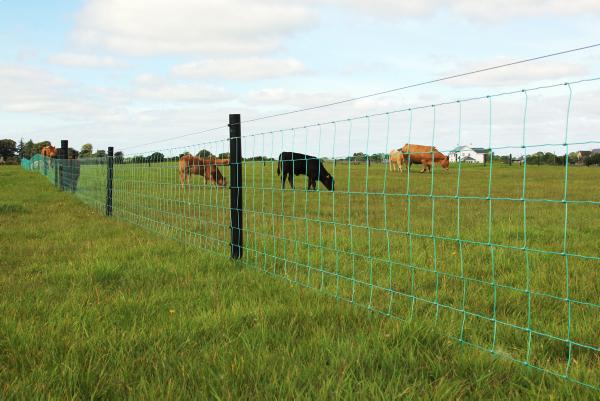Fencing contractors and suppliers of fencing equipment are reporting a growing interest in dividing up large grazing blocks into smaller divisions. The interest is being driven by a desire to improve grassland management and utilisation of any resulting extra grass. Fields are being divided up for fattening cattle and to allow calves graze the pick of grass ahead of suckler cows. Rented land is being divided up for dairy followers. A factor here is the appearance of better solar-charged battery fencers. These make effective fencer units and are a good solution for outfarms and rented land.
Map
Dividing up fields takes a bit of advance planning. You must decide on the number of paddocks, their size and shape, best access points to and from the yard, and location of drinkers.
This is best drawn up on a map in advance. A map will show you the length of roadways, access routes to the yard, the route for any new water pipe, etc.
Allocating stock on the farm into a small number of grazing groups will allow the total number of paddocks to be kept at a manageable level. For beef production, a rotation grazing system should have a minimum of six and ideally eight grazing divisions for each grazing group.
This is in contrast to paddocks for dairy cows, where a straightforward 21 paddocks evenly dividing up the total grazing area was typically considered ideal, promoting grass quality.
Paddock size
Aim for equal divisions. Avoid long, narrow divisions. The ratio of field sides should be no more than four to one to prevent narrowing of paddocks. If possible, keep paddocks square or rectangular. This will help jobs such as topping, mowing, etc. You will then get the most value from fertilizer spreading – if paddocks are triangular in shape, there will be more overlapping when spreading.
The ideal size for a 40-cow suckler herd is 2ha per paddock. Ensure that each paddock has a number of access points. Water trough access is equally important.
Temporary electric fencing should be used to divide larger fields to give the required paddock size, especially when grazing silage ground during the first rotation.
Divide paddocks so that at least four or five can be achieved in spring and two or three in autumn.
A water supply in each grazing division is necessary. Ideally, every paddock should have a permanent water supply.
Placing troughs under fences reduces the number of troughs required. If using a temporary wire to strip or block graze, strategically place troughs in the field so that animals do not have to walk back over the grazed area for water. Keeping water troughs in the centre of the paddock allows for livestock to be further split with temporary fencing.
Alternatively, water troughs can be fitted with a long length of water piping and the water trough can be moved between grazing areas within the one paddock. Water supply and pressure will often dictate the size and type of water trough used.
Roadways
Farm roads allow controlled access to paddocks and help prevent poaching and soil damage. Make roads wide enough to allow livestock and machinery travel with ease. Slurry tankers are getting bigger. Most grass mowers now are 10ft wide and you may want to bale silage off a paddock in the future. A good width for a farm road is 12 to 14ft. Anything wider may not be necessary and adds to cost.
The gap openings into paddocks must also be wide enough to allow stock and machinery move in and out easily. Cost is not an issue here. At least make sure that wire across a gap is long enough to also span the road. This obviously makes movement of stock easier.
Keep the gap into the paddock at the nearest side to the yard. This shortens the distance to be walked.
Cut hedges before putting up new fences. Then keep electric fence wire one metre out from the hedge. This will allow enough room later for the hedge cutter to keep briars and other growth back from the fence.
It the fence wire is high enough, grazing cattle will reach in under it and keep grass down under the wire.






 This is a subscriber-only article
This is a subscriber-only article









SHARING OPTIONS: